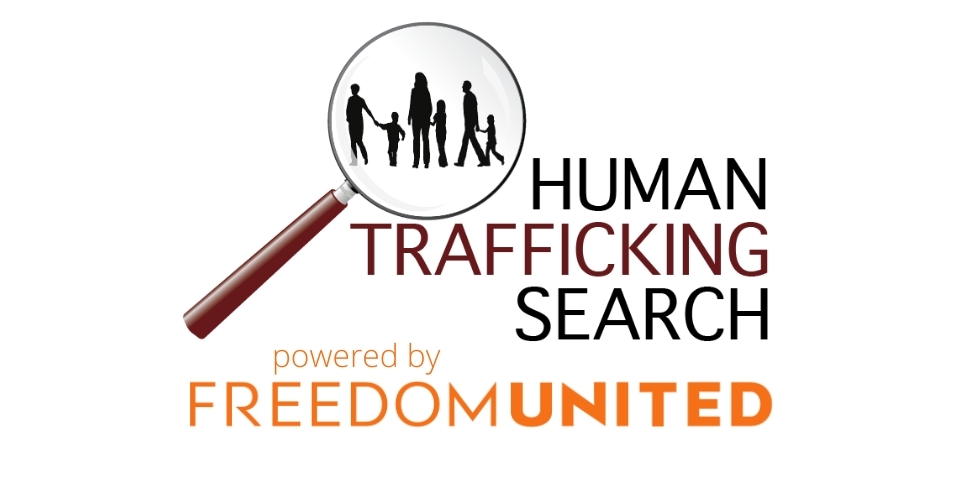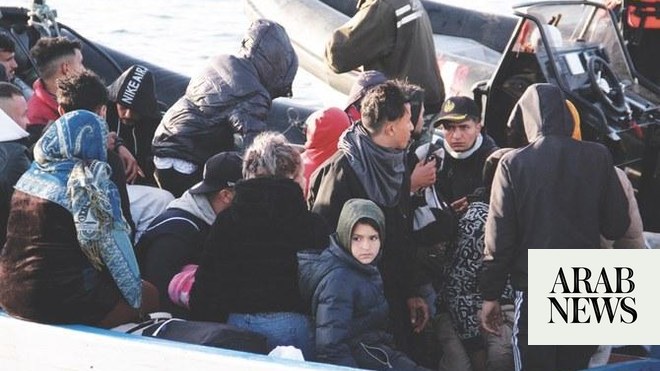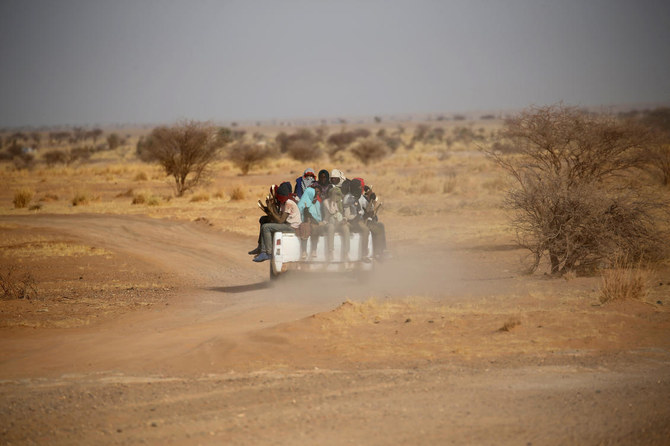
From inside narrow huts with wooden boards and sheets of tin, dozens of illegal migrants, including women and children, wait for their fate after the outbreak of a bloody armed battle involving members of Abu Qureen gang, which left three dead and many wounded.
The migrants, who belong to African and Asian nationalities, were packed six months ago in these huts near the Libyan capital, in preparation for the last phase of their long journey, which began on the outskirts of the southern desert of Libya near Chad and ended near the coast of the cities of Zuwara and Sabratha in the west, waiting to be transported in rubber boats to the Mediterranean Sea.
“We went to the place where the shooting took place and we found dead and wounded; but we did not find any militias or migrants,” an official in a security agency in western Libya told Asharq Al-Awsat.
“We listened to the testimonies of some of the wounded and how they were handed over from one gang to another until they fell into the hands of members of the Abu Qureen militia before they were driven in shabby boats to the sea,” he said.
International migration organizations monitor every year the flow of tens of thousands of people to Libya in an attempt to reach Europe through the Mediterranean Sea.
The smuggling of migrants usually begins with their infiltration across the borders between Libya, Egypt, Sudan, Chad and Niger, as well as Algeria.
Abu Qureen is one of the most notorious smuggling groups in Sabratha, along with other militias operating in the city of Zawia, west of Tripoli.
Bashir, one of the three injured, told the security services in Sabratha: “We arrived in the Libyan desert after a difficult journey, which took more than two weeks. We moved from one truck to another until we reached the city of Sabha (the capital of southern Libya); a little girl, who was accompanied by her father, did not tolerate the heat inside the closed truck box and passed away. Most of us were sick.”
“As we reached Sabha, a large truck carrying three gunmen took us in a closed box with a bad odor,” said Bashir, who was being treated for a deep wound on his right leg. After taking all our money, they gave us food and water, and we went in the dark box for long hours. When some of us felt very tired and breathless, we knocked with our hands and feet. So the driver stopped after about an hour at the entrance to Sabratha ... But the girl died in her father’s arms.”
“Several interviews were conducted by NGOs with migrants from Eritrea and Ethiopia, for example, revealing that gangs from their homeland have smuggled them in return for money,” said Mahmoud Ali al-Tuwair, an adviser to the Arab-European Institute for Strategic Studies and Research.
In an interview with Asharq Al-Awsat, Tuwair said that 600,000 migrants, some of whom are in the south of Libya, are waiting to be driven to western Libya, while others remain in the hands of smugglers, to be sent to the sea.”
The suffering of migrants is not limited to the thousands, who are only on the streets of Libya. International organizations have always criticized the bad conditions and harsh treatment in some of the 20 centers in the western part of the country, which comprise some 7,000 migrants of different nationalities.
But Brigadier Mohamed Ali Bashir, head of the illegal immigration control agency, told Asharq Al-Awsat: “We treat all illegal migrants, humanely, and despite the limited potential of the country, we seek to provide all their needs.”
Reports indicate that 6,833 repatriations have been carried out, while local and international organizations said illegal migrants arriving in the country have contributed to the spread of diseases such as HIV/AIDS, Tuberculosis and Hepatitis.
More than 600,000 people have crossed the Mediterranean into Italy over the past four years, most of them from Libya, according to official data. According to a recent report by the Italian Ministry of the Interior, “65 percent of the migrants who landed on the Italian coast in a year, arrived mainly from Libya, 15 percent from Tunisia, 3.5 percent from Turkey, 2 percent from Algeria, a similar percentage from Greece and Egypt, and 0.5 percent from Montenegro.”
Hundreds of migrants drown in the Mediterranean, but Libyan coastguards and international organizations often rescue many others. Some return to shelters in Libya while others manage to move to the European mainland.
The total number of migrants and refugees who entered Europe through the Mediterranean has reached more than 60,000 since the beginning of 2018, about half the number of migrants who entered Europe the same time last year.










